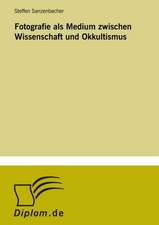CINEMATOGRAPHY IN THE WEIMAR RPB: The Fairleigh Dickinson University Press Series in Communication Studies
Autor Paul Matthew St. Pierreen Limba Engleză Paperback – 30 aug 2018
Din seria The Fairleigh Dickinson University Press Series in Communication Studies
- 23%
 Preț: 663.14 lei
Preț: 663.14 lei - 27%
 Preț: 710.87 lei
Preț: 710.87 lei -
 Preț: 461.87 lei
Preț: 461.87 lei - 27%
 Preț: 739.20 lei
Preț: 739.20 lei -
 Preț: 436.34 lei
Preț: 436.34 lei -
 Preț: 505.96 lei
Preț: 505.96 lei - 27%
 Preț: 684.65 lei
Preț: 684.65 lei - 23%
 Preț: 591.98 lei
Preț: 591.98 lei - 27%
 Preț: 718.02 lei
Preț: 718.02 lei -
 Preț: 446.65 lei
Preț: 446.65 lei - 27%
 Preț: 679.73 lei
Preț: 679.73 lei - 23%
 Preț: 662.38 lei
Preț: 662.38 lei - 23%
 Preț: 702.15 lei
Preț: 702.15 lei - 23%
 Preț: 490.94 lei
Preț: 490.94 lei - 23%
 Preț: 685.09 lei
Preț: 685.09 lei - 27%
 Preț: 818.13 lei
Preț: 818.13 lei -
 Preț: 386.17 lei
Preț: 386.17 lei -
 Preț: 397.67 lei
Preț: 397.67 lei - 23%
 Preț: 648.64 lei
Preț: 648.64 lei - 23%
 Preț: 649.09 lei
Preț: 649.09 lei - 23%
 Preț: 648.50 lei
Preț: 648.50 lei -
 Preț: 534.51 lei
Preț: 534.51 lei - 23%
 Preț: 455.62 lei
Preț: 455.62 lei -
 Preț: 413.57 lei
Preț: 413.57 lei -
 Preț: 443.72 lei
Preț: 443.72 lei - 22%
 Preț: 271.44 lei
Preț: 271.44 lei
Preț: 451.44 lei
Nou
Puncte Express: 677
Preț estimativ în valută:
86.38€ • 90.42$ • 71.90£
86.38€ • 90.42$ • 71.90£
Carte tipărită la comandă
Livrare economică 31 martie-14 aprilie
Preluare comenzi: 021 569.72.76
Specificații
ISBN-13: 9781611479461
ISBN-10: 1611479460
Pagini: 286
Dimensiuni: 152 x 229 x 22 mm
Greutate: 0.43 kg
Editura: Rowman & Littlefield
Seria The Fairleigh Dickinson University Press Series in Communication Studies
ISBN-10: 1611479460
Pagini: 286
Dimensiuni: 152 x 229 x 22 mm
Greutate: 0.43 kg
Editura: Rowman & Littlefield
Seria The Fairleigh Dickinson University Press Series in Communication Studies
Cuprins
List of Illustrations
Acknowledgments
1 The Weimar Revolution and German Collaborative Filmmaking
2 The Optical Convergence of Theodor Sparkuhl and Ernst Lubitsch
3 Karl Freund¿s Signature Visual Designs in Manifold Collaborations
4 Carl Hoffmann and the New Visual Discourse of German Silent Film
5 Fritz Arno Wagner, with F. W. Murnau, Fritz Lang, and Arthur Robison
6 Fritz Arno Wagner, G. W. Pabst, and the Weimar Zeitgeist
7 Günther Rittau, Günther Krampf, Optical Language, and Autonomous Collaborative Agency
8 Guido Seeber¿s Promotion from Special Effects Technician to Cinematographic Artist
9 Rudolph Maté, Carl Theodor Dreyer, and the Framing Principle of Cinematography
10 Cinematographers as Directors as Cinematographers and the Rebirth of Civilization
Filmography
Works Cited
Index
About the Author
Notă biografică
Paul Matthew St. Pierre is professor of English at Simon Fraser University, Vancouver.
Descriere
Cinematography in the Weimar Republic argues that the new medium of film was preeminent among the avant-garde art forms that distinguished the cultural renaissance of the Weimar Republic and that within this progressive medium cinematographers were the leading purveyors of the new kinetic visual imaginary.



















